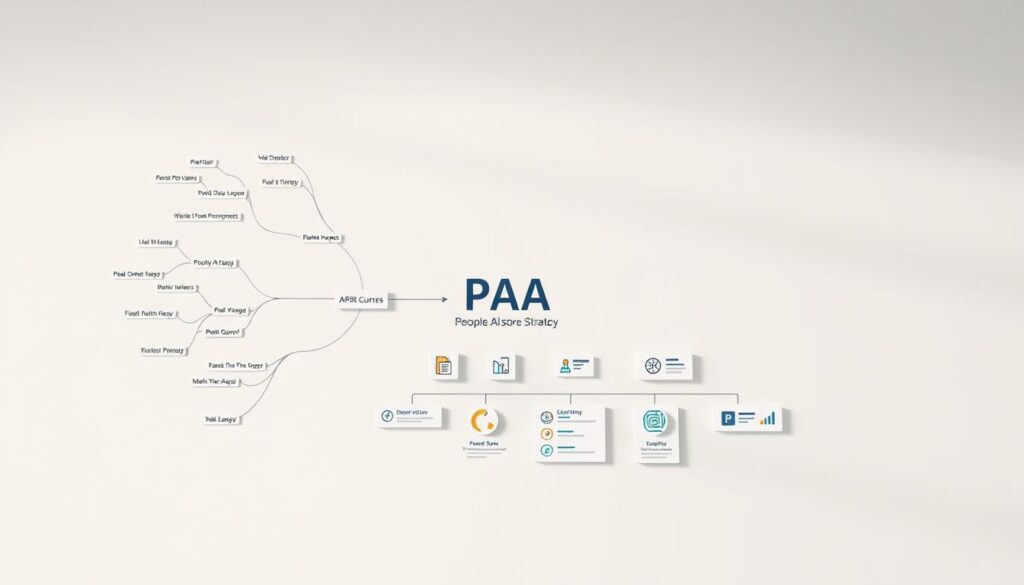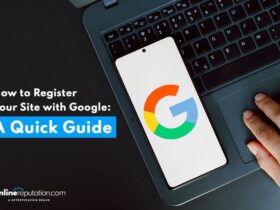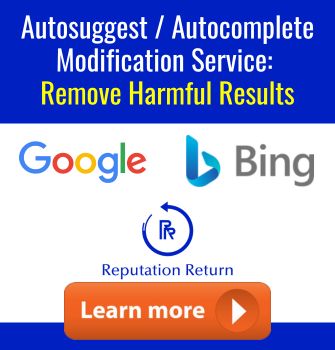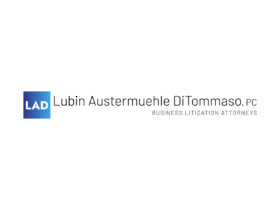In today’s digital landscape, optimizing for Google’s People Also Ask (PAA) results is a powerful way to enhance your online visibility and engagement. A well-executed content audit is the first step toward achieving this goal. At Reputation Return, we specialize in helping businesses like yours refine and enhance their digital presence, ensuring your content strategy aligns with user intent and search engine expectations.
Imagine having insights into what your audience is truly seeking. By leveraging tools like Google Search Console and third-party platforms such as Ahrefs, we can uncover gaps in your content and identify opportunities to rank higher. Our process involves a thorough examination of your existing content, focusing on keywords, user engagement, and technical SEO. This comprehensive approach not only improves your PAA performance but also boosts your overall search engine rankings.
Why is this important? A content audit reveals more than just missing keywords—it highlights areas where your content can better serve your audience. By addressing these gaps, you can create a more engaging and relevant user experience, which in turn improves your SERP performance and drives more targeted traffic to your site.
Key Takeaways
- A content audit is essential for identifying gaps and enhancing user engagement.
- Tools like Google Search Console and Ahrefs provide valuable insights for optimization.
- Optimizing for PAA results can significantly improve your search engine rankings.
- A comprehensive audit leads to better content strategy and user experience.
- Regular audits are crucial for maintaining and improving digital reputation.
Introduction to PAA Content Audits
In the ever-evolving digital world, understanding and leveraging Google’s People Also Ask (PAA) feature has become crucial for enhancing online visibility. A PAA content audit is a specialized process designed to evaluate and improve how your website addresses the questions users are asking.
Why Content Audits Matter for SEO
A thorough content audit is indispensable for identifying gaps and opportunities in your SEO strategy. By analyzing your existing content, you can uncover areas where you’re falling short and pinpoint chances to rank higher. This process involves a detailed examination of keywords, user engagement, and technical SEO elements. The insights gained from such an audit can significantly enhance your search engine performance and drive more targeted traffic to your site.
Understanding the Role of PAA in Modern Search
People Also Ask (PAA) boxes are a prominent feature in Google’s search results, appearing in over 70% of SERPs. These boxes provide users with quick answers to related questions, increasing the likelihood of higher click-through rates. Aligning your content with PAA questions can lead to better user engagement and improved search rankings. For example, if your content directly addresses a PAA question, it has a higher chance of being featured in the snippet, driving more traffic to your site.
| Benefit | Impact on SEO |
|---|---|
| Improved User Engagement | Higher click-through rates and longer session durations |
| Increased Visibility | Better chances of featuring in PAA snippets |
| Enhanced Content Strategy | Alignment with user intent and technical SEO best practices |
By conducting regular PAA content audits, businesses can protect their online reputation and ensure their content resonates with their audience’s needs. This proactive approach not only boosts SEO performance but also fosters trust and credibility in the digital space.
Gathering Tools and Data for Your Content Audit
To effectively gather the tools and data necessary for your content audit, it’s essential to start with the right resources. At Reputation Return, we emphasize the importance of leveraging a combination of Google Search Console, Google Analytics, and third-party tools like Ahrefs to ensure comprehensive insights.
Utilizing Google Search Console and Analytics
Google Search Console offers valuable data through its Performance and Coverage reports. These reports provide insights into how your website performs in search results, identifying top-performing pages and potential issues. Exporting this data allows you to filter and analyze it effectively, helping you understand your content’s strengths and weaknesses.
Integrating Google Analytics data adds another layer of insight, enabling you to measure user behavior and engagement. This combination helps you identify which pages resonate most with your audience and where improvements are needed.
Third-Party Tools: Ahrefs, thruuu, and More
Third-party tools like Ahrefs and thruuu offer deeper keyword insights, helping you uncover opportunities to rank higher. These tools can highlight gaps in your content strategy and provide actionable recommendations.
| Tool | Benefits |
|---|---|
| Google Search Console | Performance metrics and issue identification |
| Google Analytics | User behavior and engagement insights |
| Ahrefs | Keyword insights and content strategy |
Merging data from these tools using methods like Google Sheets’ INDEX MATCH function provides a holistic view of your content’s performance. This approach ensures you can address both strengths and weaknesses effectively, leading to a more refined content strategy.
Step-by-Step Process for Conducting a Content Audit
Conducting a content audit is a systematic process that helps businesses identify gaps and opportunities to improve their search engine performance. At Reputation Return, we believe in a methodical approach that ensures every aspect of your content is evaluated for optimal results.
Mapping Existing Content and Identifying Gaps
The first step in any successful content audit is to map your existing content. This involves cataloging all pages on your website, including blogs, product descriptions, and service pages. By organizing this data in a spreadsheet, you can easily compare metrics side-by-side. Look for pages with low engagement or poor rankings—these are prime candidates for improvement.
Identifying gaps is where the real opportunity lies. Use tools like Google Search Console and Ahrefs to uncover keywords you’re missing out on. For example, if a competitor is ranking for a keyword you’re not targeting, that’s a gap worth exploring. These insights allow you to create a more robust content strategy that aligns with user intent.
Executing a Detailed Data Collection
Data collection is the backbone of a successful audit. Start by exporting performance data from Google Search Console, focusing on metrics like clicks, impressions, and average rankings. Pair this with Google Analytics data to understand user behavior, such as bounce rates and time spent on each page.
Third-party tools like Ahrefs add another layer of depth, offering keyword insights and identifying opportunities to rank higher. By merging this data in a spreadsheet, you can flag low-performing pages and prioritize updates. For instance, pages with high bounce rates or low engagement should be at the top of your list for refreshment.
Once you’ve collected your data, it’s time to act. Use your findings to create actionable recommendations, ensuring each step is clear and easy to implement. Whether it’s updating meta tags or rewriting underperforming content, every change should be backed by data.
Remember, a content audit isn’t a one-time task. Regular audits are essential for maintaining and improving your digital presence. By combining qualitative and quantitative evaluation, you can refine your strategy and stay ahead of the competition.
For more insights on how to protect and enhance your online reputation, check out our guide on 10 Questions to Ask Your Reputation Management.
Analyzing and Clustering PAA Questions for Content Strategy
In the dynamic world of search engine optimization, understanding how to leverage Google’s People Also Ask (PAA) feature is key to enhancing your online presence. A strategic approach to analyzing and clustering PAA questions can significantly boost your content strategy.
Extracting Seed Keywords and PAA Data
Start by identifying seed keywords from your existing content using tools like ChatGPT. These tools help uncover relevant terms that resonate with your audience. For instance, if your business focuses on digital marketing, seed keywords might include “social media tips” or “SEO trends.”
Next, use third-party tools such as thruuu to gather thousands of PAA questions and related searches. These tools expand your keyword list, providing a comprehensive dataset to work with. For example, a seed keyword like “SEO trends” might branch out into questions like “What are the latest SEO trends for 2023?” or “How do SEO trends impact content strategy?”
Grouping Keywords and Formulating Topic Clusters
Once you have your keyword list, the next step is to group similar keywords into clusters based on SERP similarity. This involves organizing keywords that appear together in search results. Using tools like Ahrefs, you can identify clusters that form around core topics, such as “technical SEO” or “content marketing strategies.”
| Benefit | Impact on SEO |
|---|---|
| Improved User Engagement | Higher click-through rates and longer session durations |
| Increased Visibility | Better chances of featuring in PAA snippets |
| Enhanced Content Strategy | Alignment with user intent and technical SEO best practices |
By clustering your keywords, you can create a content plan that addresses different stages of the buyer’s journey. For example:
- TOFU (Top of Funnel): Educational content like “What is SEO?”
- MOFU (Middle of Funnel): Comparative content such as “SEO vs. PPC.”
- BOFU (Bottom of Funnel): Action-oriented content like “How to hire an SEO expert.”
Automated tools can streamline this process, but manual vetting ensures relevance and value. This approach not only drives traffic but also supports long-term revenue goals.
Competitor analysis and search metrics can further refine your clusters. By understanding what works for others, you can identify gaps and opportunities in your strategy. Regular audits ensure your content remains relevant and effective.

For more insights on protecting your online reputation, visit our guide on 6 Red Flags to Look For.
Optimizing Your Content for People Also Ask
Optimizing your content to appear in Google’s People Also Ask (PAA) section can significantly boost your online visibility and user engagement. By understanding how to structure your content effectively, you can increase your chances of being featured in these prominent search result features.
Applying Structured Data and Schema Markup
Structured data and schema markup play a crucial role in helping search engines understand your content. Implementing FAQPage and QAPage schemas on your website can signal to Google that your content is well-organized and ready to be featured in PAA boxes. These schemas provide a clear structure for your questions and answers, making it easier for search engines to identify and display them in search results.
Enhancing On-Page SEO Elements
Optimizing your on-page SEO elements is essential for improving your content’s visibility. Start by refining your meta titles and descriptions to include relevant keywords. Use header tags to clearly structure your content, ensuring that questions are prominently displayed. Additionally, format your answers concisely and directly to capture featured snippets. These adjustments not only improve your SEO value but also enhance the user experience.
By combining these strategies, you can increase your chances of appearing in both organic search results and PAA boxes. This dual benefit not only drives more traffic to your site but also enhances your credibility and online presence.
Measuring Progress and Refining Your PAA Strategy
Continuous improvement is key to maintaining a successful PAA strategy. By regularly assessing your progress, you can identify areas for refinement and ensure your approach remains effective.
Tracking Rankings and User Engagement
To measure the success of your PAA strategy, start by monitoring ranking improvements using tools like Rank Tracker. These tools help track how well your optimized content is performing in search results. Additionally, analyze user engagement metrics such as bounce rates, time spent on your site, and conversion rates through Google Analytics. Lower bounce rates and longer session durations often indicate more engaging content.
Adjusting Your Content Strategy Based on Data Insights
Regularly review your data to identify opportunities for improvement. For instance, if certain pages have high bounce rates, consider updating the content to better address user questions. Use keyword insights to refine your targeting and ensure your content aligns with user intent. Comparing your performance against competitor benchmarks can also reveal gaps in your strategy. Continuous monitoring allows you to adapt to changes in search algorithms and user behavior, ensuring your strategy remains effective over time.

For more insights on how to protect and enhance your online reputation, check out our guide on knowing your online reputation score.
Conclusion
In conclusion, optimizing for Google’s People Also Ask (PAA) results is a powerful way to enhance your online visibility and engagement. A well-executed content audit is the first step toward achieving this goal. At Reputation Return, we specialize in helping businesses like yours refine and enhance their digital presence, ensuring your content strategy aligns with user intent and search engine expectations.
By integrating technical SEO, content quality, and user engagement into a unified strategy, you can improve your search engine rankings and drive more targeted traffic to your site. Regular audits and the use of advanced tools like Ahrefs and Google Search Console ensure your strategy remains effective over time.
Reputation Return offers a free confidential consultation to help businesses optimize their PAA results. Our expertise in SEO and content strategy can help you stay ahead in search rankings. Continuous evaluation and updates to your content are key to maintaining a strong online presence.
Take the first step today and contact us for tailored advice on improving your PAA performance and overall digital strategy.
FAQ
What is a PAA content audit and why is it important for SEO?
A PAA (People Also Ask) content audit is a process of evaluating your website’s content to identify opportunities for improving your rankings in Google’s “People Also Ask” feature. It helps align your content with user intent, enhances your site’s visibility, and drives more targeted traffic.
How do I start gathering data for a PAA content audit?
Begin by using tools like Google Search Console and Analytics to understand your site’s performance. Supplement this with third-party tools such as Ahrefs or thruuu to uncover PAA questions relevant to your content and keywords.
What steps are involved in conducting a detailed content audit?
The process includes mapping your existing content, identifying gaps, and collecting detailed data on performance metrics. This helps you understand what’s working and where there’s room for improvement.
How can I optimize my content to rank in the People Also Ask section?
Focus on answering specific questions related to your topic, use structured data and schema markup, and ensure your on-page SEO elements like headers and meta descriptions are optimized for relevance and clarity.
What tools can I use to analyze and cluster PAA questions?
Tools like Ahrefs, SEMrush, or even Google’s own tools can help extract seed keywords and PAA data. Grouping these into topic clusters allows you to create comprehensive content strategies.
How do I measure the success of my PAA strategy?
Track your rankings, user engagement, and click-through rates. Regularly review your content’s performance and adjust your strategy based on data insights to refine your approach.
Can I request a free consultation to discuss my content audit needs?
Absolutely. Reputation Return offers a free confidential consultation to discuss your specific needs and provide tailored solutions for your digital brand safety and reputation management.















